Whether you are recording at home or in a professional studio, a good condenser mic is essential to recording good vocals.
If you are planning to record vocals, you might have learnt that large-diaphragm condensers are the way to go – due to their low-mass diaphragm, condenser mics can capture the sound waves more accurately and have superior sound quality.
Condensers vs Dynamics
As compared to dynamic mics, condensers have a wider frequency response and the best transient response (referring to the “pick-up” of a mic). In turn, condensers offer higher sensitivity and lower noise than dynamic mics, allowing you to get detailed vocals with clean sound.
While dynamics are popular for their on-stage use due to their rugged construction, condensers are much better for home recording or professional studios in capturing detail and vocals.
With that said, condenser mics usually require an external power source for their internal electronics (i.e., phantom power), so be sure to get an audio interface or dedicated phantom power to get the best out of your condenser mic.
The Best Condensers Mics
1. Rode NT1-A Condenser Mic
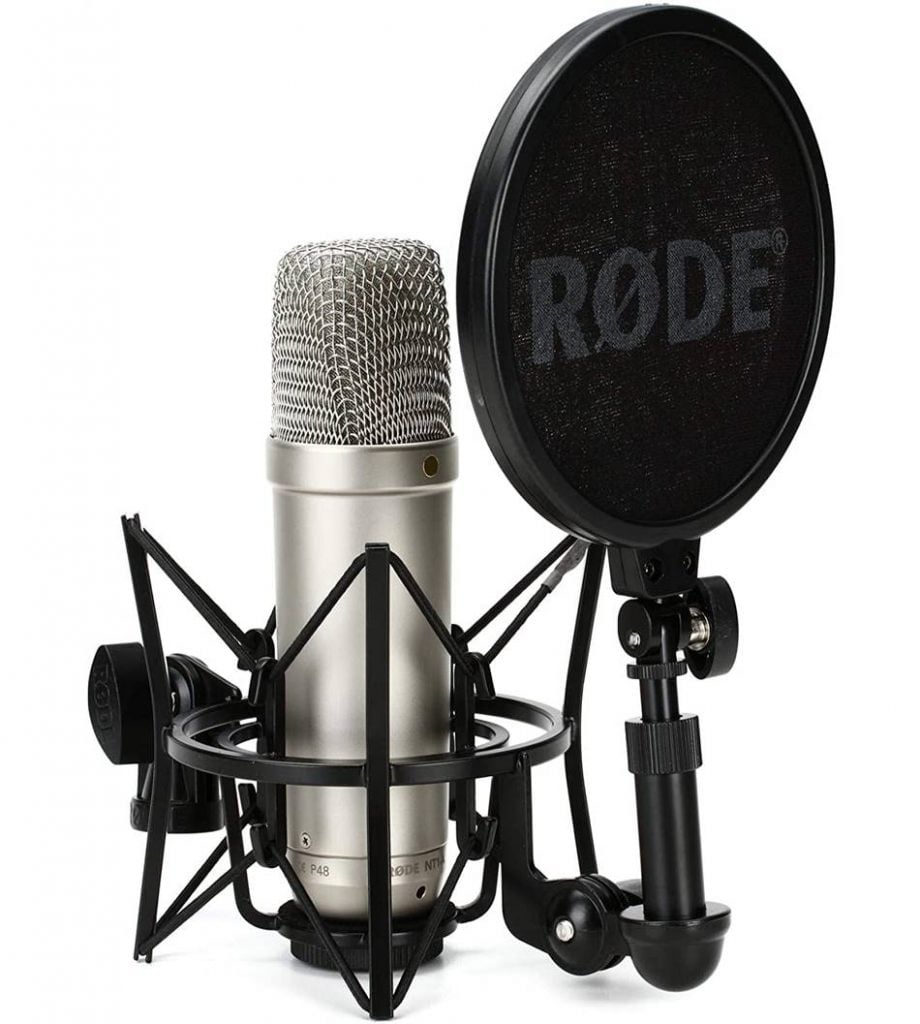
Long considered a “classic” favorite among home musicians…
The Rode NT1-A condenser is a very good investment choice if you are looking for a beginner-friendly mic that does the job well.
While this mic isn’t exactly cheap, it is a pretty decent mic below $300 that delivers some of the clearest vocals and high-end detail for recording acoustic instruments.
In addition, the Rode NT1-A is one of the quietest mics we have tested, and has an extremely low noise floor with no static. The self-noise level is only 5dB (A). This means that you get clearer vocals and cleaner recordings.
The NT1-A comes with a large diaphragm equipped with a 1” gold-sputtered capsule. Like most condensers, it has a cardioid polar pattern and comes with a Rode shock mount and pop filter.
Personally I found the NT1-A to be much better than other “budget” options such as the AKG and Audio Technica options due to its lower noise floor. Vocals sound much cleaner and well-defined, and the mic has the look and feel of a professional grade condenser.
Check them out here:
Up next…
2. Sennheiser Pro Audio MK 4 Condenser
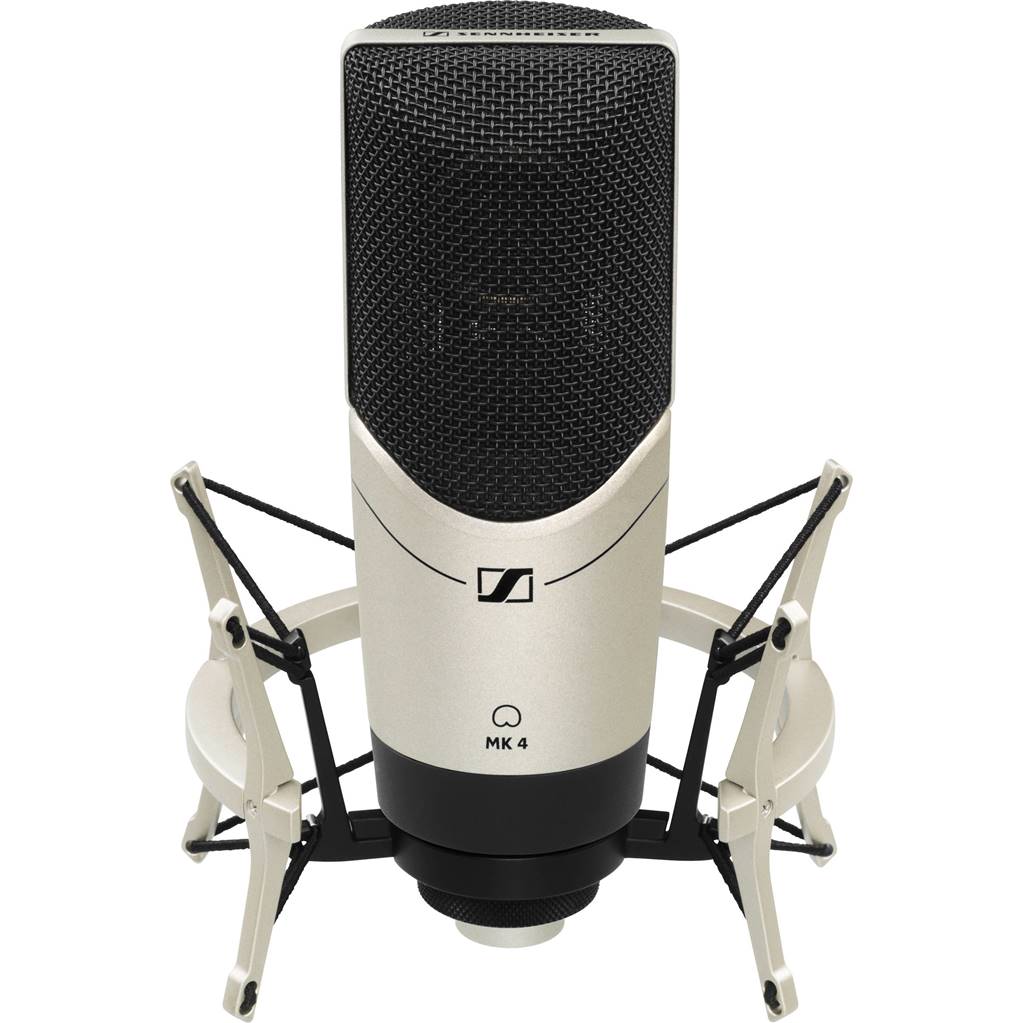
As Sennheiser’s first large-diaphragm studio condenser mic, the MK 4 condenser is comparable to Sennheiser’s high-end equipment for professional and home studio recording.
For its price range, the MK 4 represents a budget-friendly option for beginner musicians who want a true condenser mic. The mic is easy to handle and great value for money, making them ideal for project studios and home recordists.
Sennheiser stated that this mic features a 1” true condenser capsule based on the acoustics of the e 965 high-end vocal mic and is optimized for recording, and it doesn’t disappoint.
The first thing you will notice I how well this mic is made, with is solid construction and full metallic finish. The mic capsule is shock-mounted internally to minimize noise.
When used in a home studio setting, the MK 4 provides clean and transparent sound with a slight boost in the 1-2 kHz range. The mic handles sound pressure very well and at the same time being sensitive to quiet sounds.
Even if you fail to fully support the end of a sentence or phrase in a recording, the mic picks up the sound and allows you to salvage the recording. The mic does capture some proximity effect if you record close towards the mic.
That said, you need to supply phantom power to this microphone through a dedicated phantom power channel or audio interface for the best results.
At this price range, you’d be hard pressed to find a microphone condenser with a better combination of performance and build quality.
Check them out here:
Up next…
3. Neumann TLM 103 Condenser
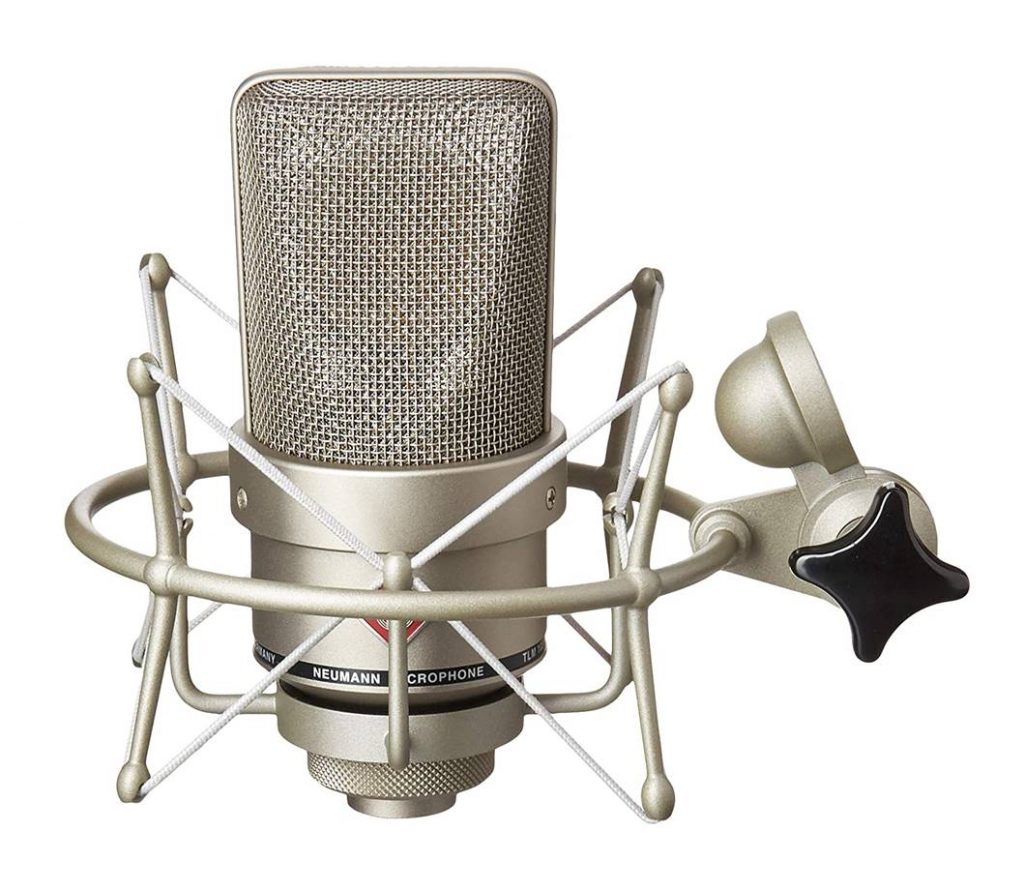
One of the “classic” favorites of professional musicians…
The Neumann TLM 103 has been around for a long time and has set the standards for home recording in the music industry. It is THE ideal large diaphragm microphone that can record every single detail in vocal performances near flawlessly.
This condenser mic features an ultra-low self-noise with high sound pressure level capability. The cardioid capsule is derived from the legendary U 87 which is acoustically well-balanced and provides good off-axis rejection at the rear end.
Although it’s a great mic for recording vocals and acoustics, be careful how you use it at home. This mic is almost too sensitive and can pick up the slightest noise (e.g., the sounds of birds chirping outside, the sound of air con circulating in your room, etc.)
I would definitely recommend the Neuman TLM 103 only if you have some sort of soundproofing done in your room as this mic literally captures EVERYTHING from vocals, air, subtle sounds and noises around you.
Overall, this is one of the best professional-grade condensers that you can get, but you need the right setup and sound proofing to handle it.
Check them out here:
Up next…
4. Rode NT1000 Studio Condenser Mic
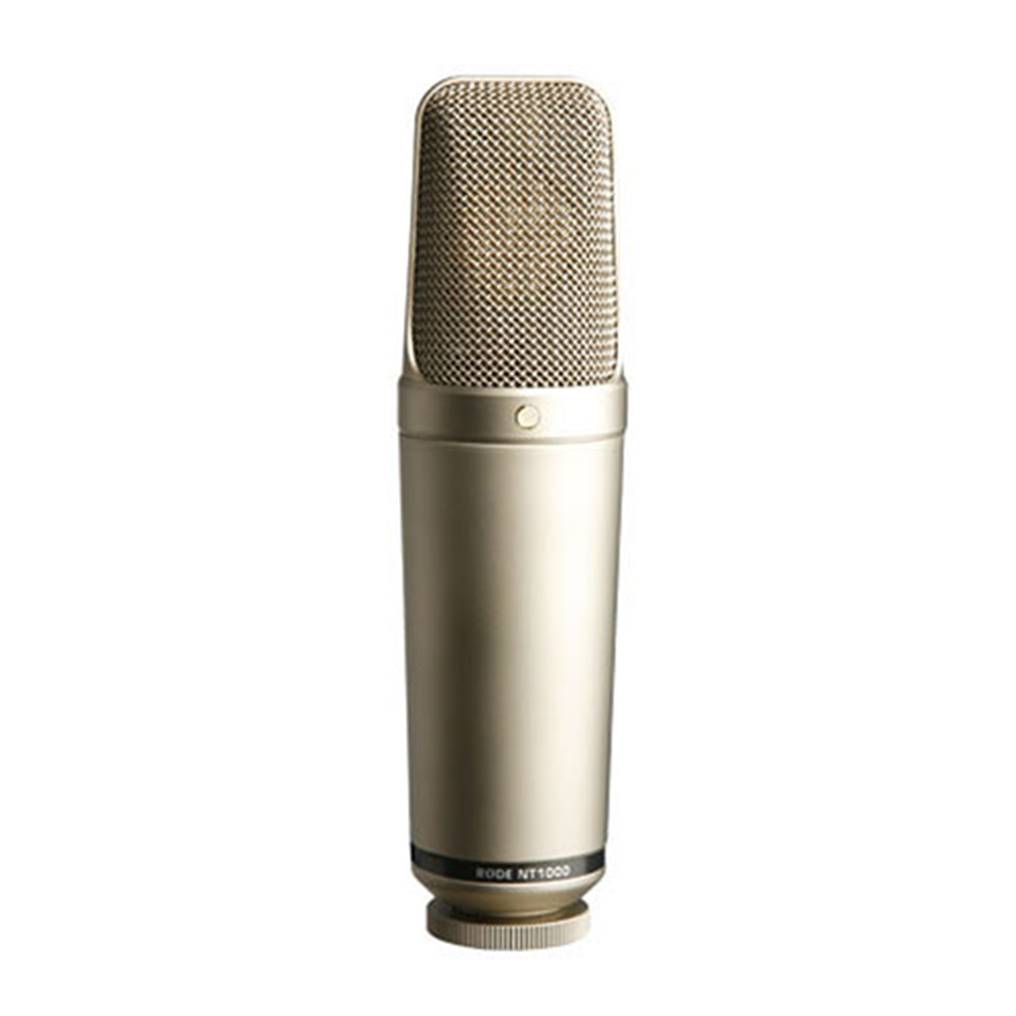
One of the more “affordable” studio-grade condenser mics…
The Rode NT 100 is a high-performance condenser for recording both vocals and acoustic instruments, and is well-known for its versatility.
Apart from vocals, the NT100 can also be used to record piano and drum overheads and acoustic guitar due to its ability to capture high-end detail.
We found the sound profile of the NT1000 just right – it has very low self-noise (6 dBA), feels crisp with full bass. The mic has a solid metal build and a wide warm sounding range. The pick-up range on this mic is incredibly versatile – it works for vocals and also acoustic instruments.
The NT1000 mic is designed with a HF2 1” capsule with a gold-plated diaphragm and has a cardioid polar pickup pattern.
In terms of design, build quality and overall recording quality, the Rode NT1000 is definitely hard to beat at its price point. It’s one of the more affordable options for beginner musicians starting out their home recording studio.
Check them out here:
Up next…
5. Shure KSM32/SL Condenser Mic
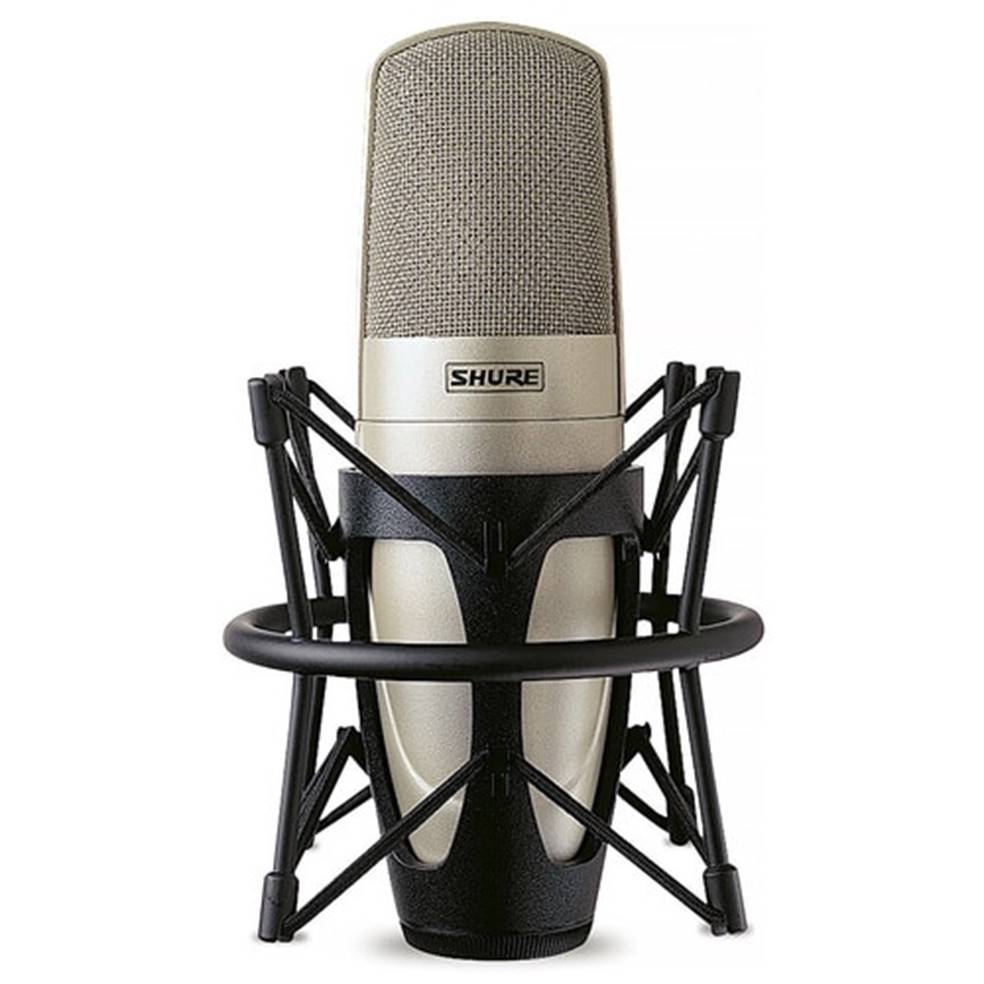
The Shure KSM32SL has been around for a long time and is highly popular with home recordists and audio engineers.
The sound produced from the Shure KSM32 is super realistic – in fact – its sound profile can be compared to that of the Neumann TM103 mic with incredible detail and high-end precision.
Compared with the Shure KSM44 which the type of mics that you’d see at professional recording studios, the KSM32 is available at a fraction of the price and sounds virtually the same. Both types of mics are great multi-purpose studio mics and you can use them to record vocals, guitar amps and as drum overheads.
Of all the mics that we have tested and owned over the years, the KSM32 comes close to the top. It is one of the cleanest, most detailed and “takes EQ well” – you can boost the frequency ranges with this mic to get the desired sound effects.
There’s also a 15 dB attenuation switch for handling high sound pressure levels, and a switchable low-frequency filter to reduce background noise or proximity effect.
If you are looking to add a professional grade condenser to your home studio, the Shure KSM32 is a great choice.
Check them out here:
Up next…
6. Slate ML-1 Condenser Mic
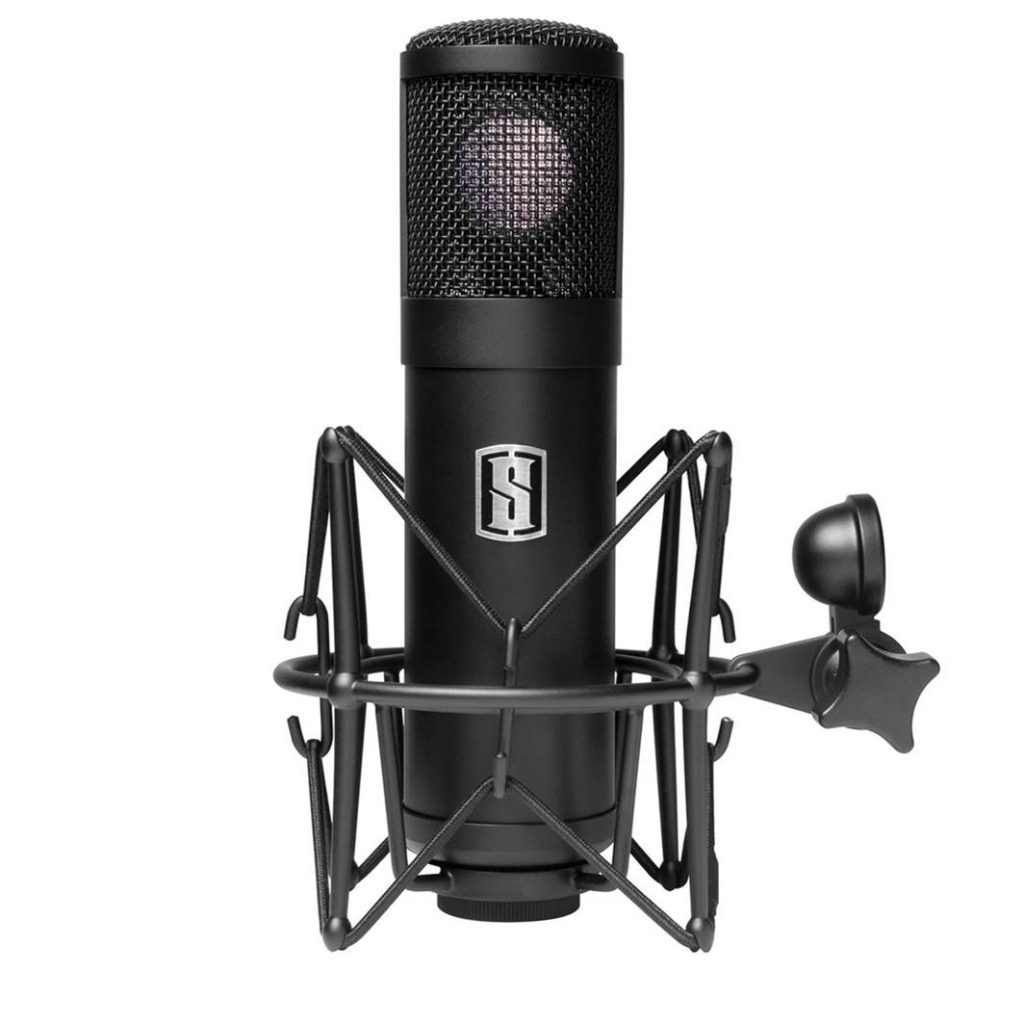
Now if you are looking for something more “high-end”, I highly recommend the Slate ML-1 condenser.
This is a large condenser cardioid condenser mic that delivers super crisp sound performance and can emulate several types of high-end mics that pop artists use to record songs.
It’s a great mic to have for vocalists and studio musicians have want a classic “studio” sound without the expense of analog hardware.
The mic has a similar sound profile to the Shure – it captures the natural tone and voice delivery without additional coloration and with incredibly low-self noise.
The ML-1 mic features a large diaphragm, gold-spluttered capsule with a tight cardioid polar pattern to pick up subtle nuances in voice performances. The linear capsule creates a sonically neutral tone so you can use it as a blank-canvas when combined with a virtual microphone system.
It also comes with a shockmount system to reduce noise vibrations. The mic itself has a solid metallic build with a black matte finish.
Do note that the Slate mic requires use to use its own VMS microphone system software.
Check them out here:
Up next…
7. Stellar X2 Diaphragm Condenser
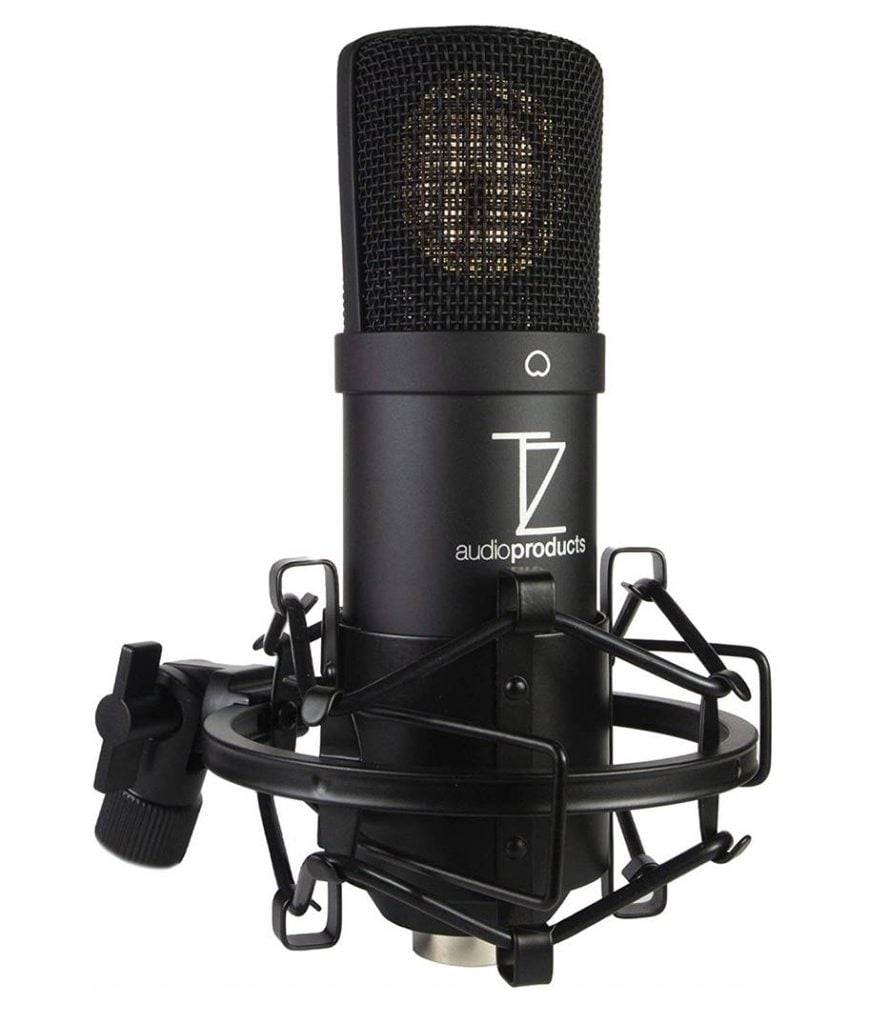
One of the more “budget-friendly” options out there for home recording studios…
The Stellar X2 is a really good condenser mic that you can find under $200. It’s ideal for studio use or home recording because it has a clear, natural warm tone with super-low self-noise.
The low-noise floor is extremely important for doing voice recording because it ensures that your recordings are clean and clear without needing to apply any post production filtering. This saves you time in post-production and ensures that you get a better overall quality in the mix.
The X2 diaphragms are made from brass and mylar, and feel like a very durable product. The diaphragm itself is very sensitive and is able to capture subtle sounds and detail in voice performances.
That said, this mic will require some phantom power to get it working. To connect the mic to a computer, be sure to use a proper USB audio interface that can supply at least 48V with an XLR to XLR cable.
Overall, the Stellar X2 is an affordable large diaphragm condenser for home musicians and a great beginner’s option.
Check them out here:
Up next…
8. Warm Audio WA-87 Condenser Mic
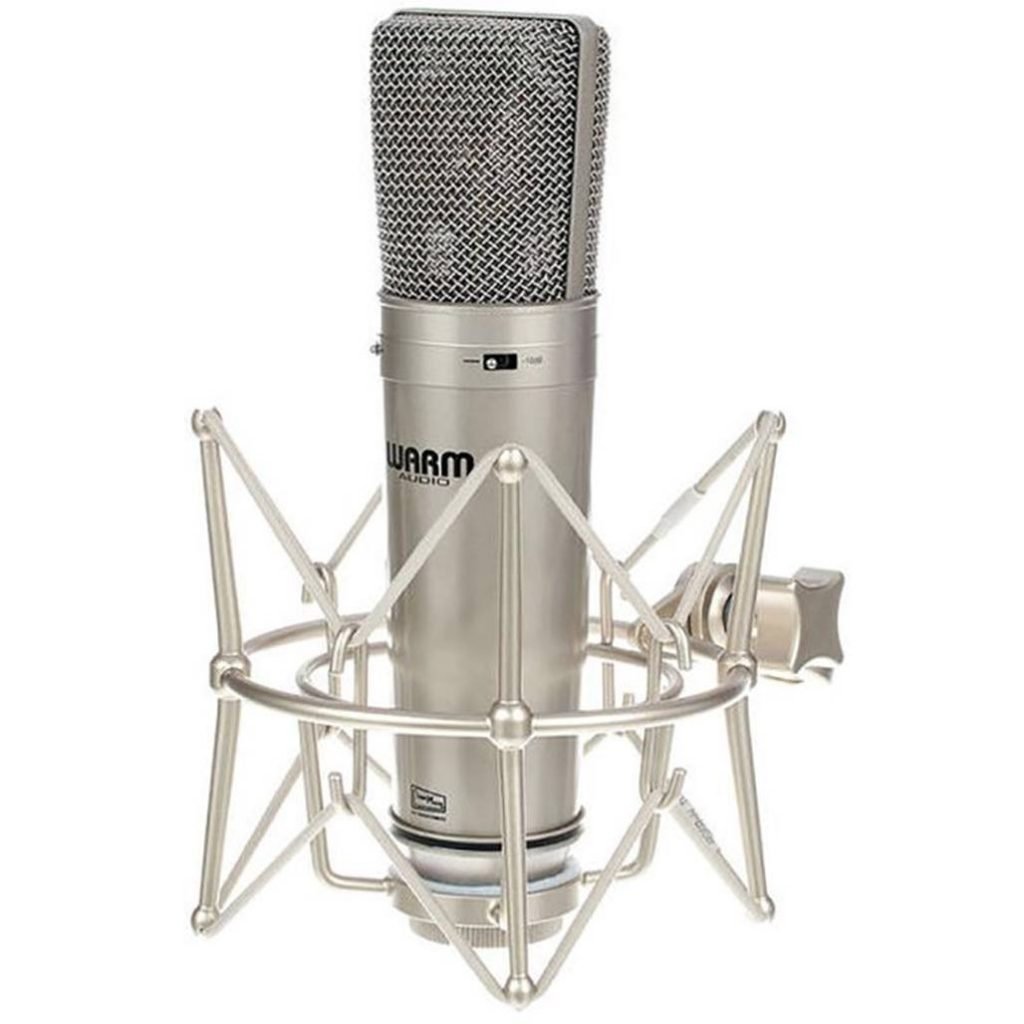
If you are into vintage-style condenser mics, I highly recommend the Warm Audio WA-87s.
The WA-87s is Warm Audio’s attempt to reintroduce a “classic” version of the 87’ mic with a warmer sound and vintage inspired design.
One of the most difficult things to do as a professional vocalist is to choose the microphone that fits your voice and the type of music genre that you do. The Warm Audio WA-87s is actually based off the classic 87’ that’s most widely used in pop recording history.
Compared with the Neumann TLM 103 and Lauten 320, this microphone has great sound quality and very clean acoustics. They sound absolutely amazing when you record vocals and acoustic guitar together with this mic, capturing every single detail and subtle nuance.
The WA-87 has a warm sounding structure and a wide frequency response of 20 to 20 kHz. While the frequency response curve is not the same as the Neumann U87, you can use EQ to offset the boost in the high frequencies on the WA87.
Overall, the WA-87 is a pretty solid condenser mic with a warmer tone and vintage design.
Check them out here:
Up next…
9. MXL Mics 770 Cardioid Condenser
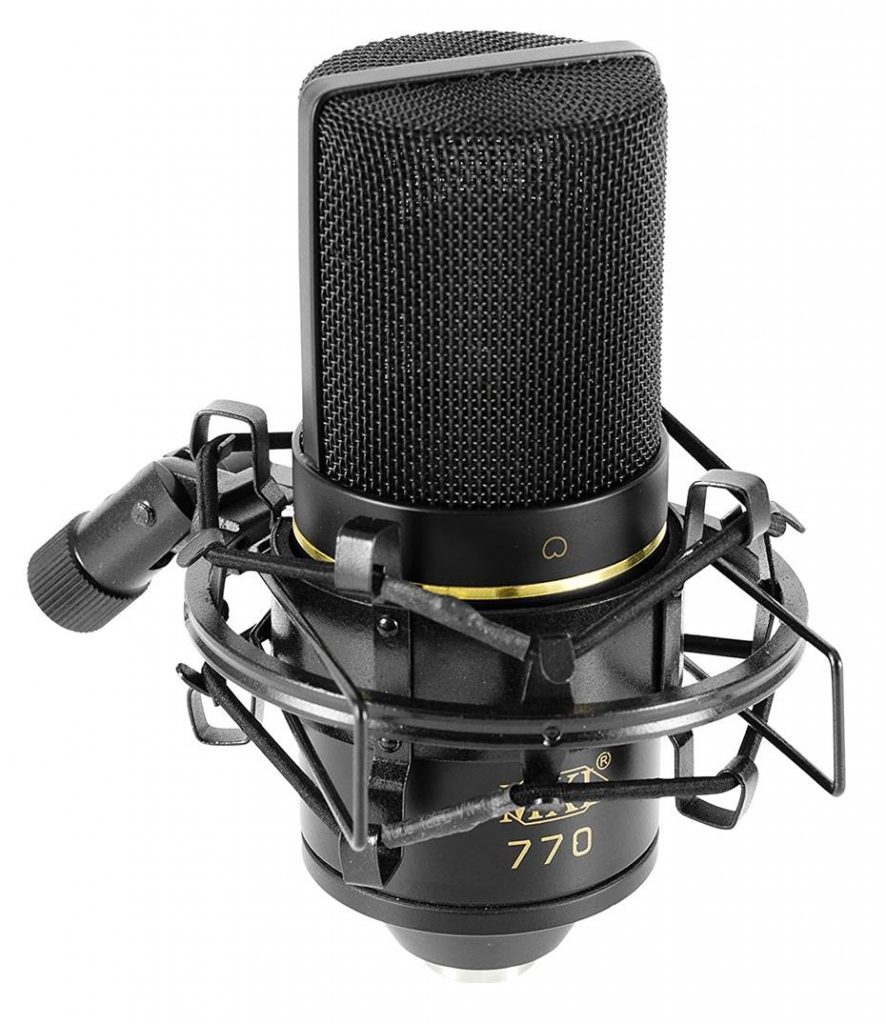
The MXL Mics 770 is a multi-purpose condenser microphone that’s become highly popular with singers and voice artists.
Compared with other mics, the MXL 770 has a distinctly rich an warm tone that fits individuals with deeper voice tones. The mic has a warm sound with extra clarity at the top-end, so there’s no need to boost the sound with EQ. Although they work best for vocals, they are also good for guitar, piano or ukulele instruments.
The MXL 770 uses a high-quality FET preamp with a balanced output for wider dynamic range. The FET preamp allows for balanced, transformerless output and low-frequency roll-off to reduce proximity effect.
I do recommend getting a pop filter or windscreen to go with this mic to block out plosives and reduce the background noise that can be picked up by this microphone.
All in all, the MXL Mics 770 is a good option for beginner musicians who want to get a decent condenser mic without breaking the bank.
Check them out here:
Up next…
10. sE Electronics X1 Condenser Mic
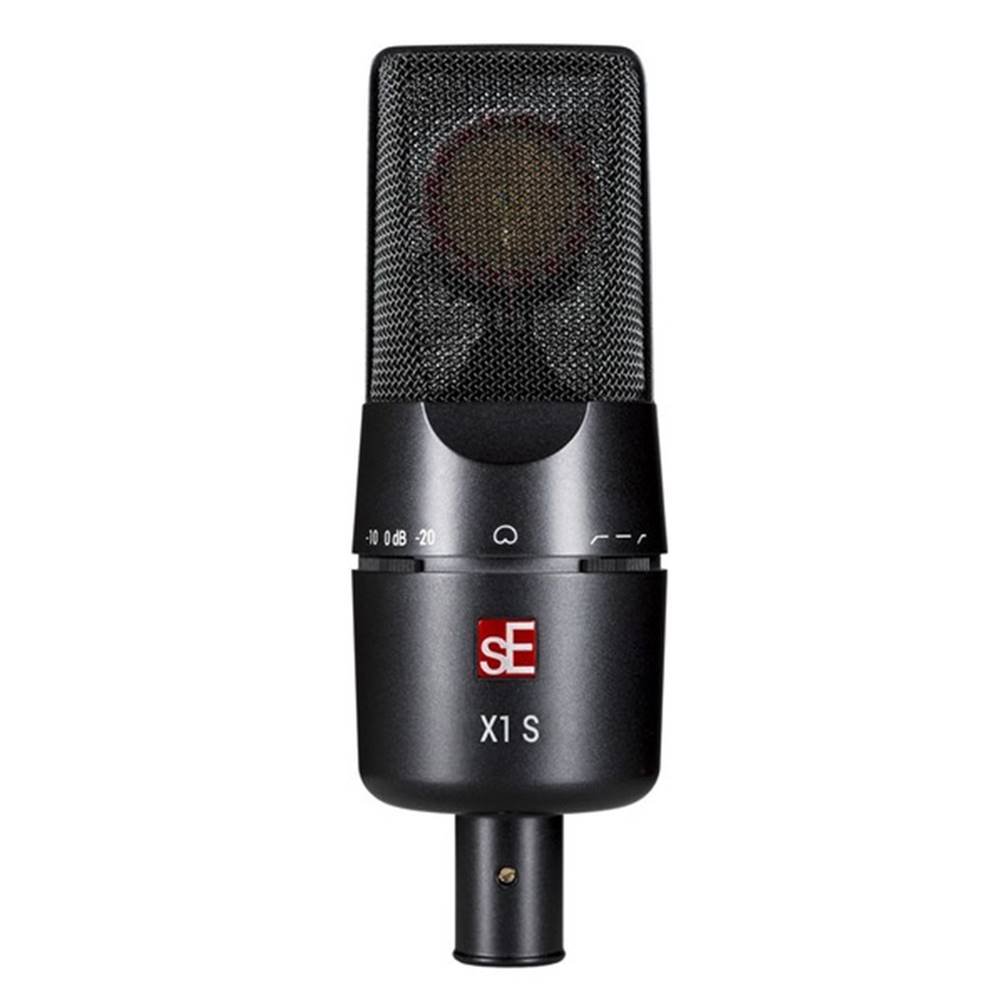
The sE Electronics X1 is a vocal condenser mic that’s built to deliver an almost flat frequency response and faithfully reproduce the sound of the source. It is one of the best entry-level condensers in my opinion, especially given its sound quality and price point.
For recording vocals and acoustic guitar, this mic is as good as professional studio microphone with really clean sound quality. On drum overheads and electric guitar, it isn’t as amazing but still gets the job done fairly well.
The X1’s condenser capsule design delivers really good sonic performance with well-balanced frequency response and accuracy. It also comes with an all-metal chassis which provides efficient rejection of any electrical interference and noise, and has a very nice vintage finish.
One thing that we liked about the sE X1 is its attenuation and low cut switches. The -20 dB pad switch on the left provides extended dynamic range, while the 100 Hz low-cut switch on the right helps to eliminate low-frequency rumble. It also compensates for excessive bass when close-miking (with the proximity effect).
The mic also comes with an integrated windscreen to reduce plosive sounds.
On the whole, the sE Electronics X1 is an exceptionally solid entry-level condenser mic for beginners with a very clean frequency response for vocals.
Check them out here:
Next Steps
To learn more about the types of microphones you can use for your home studio, or simply want to learn more about the best mics for beginners, check out these posts:
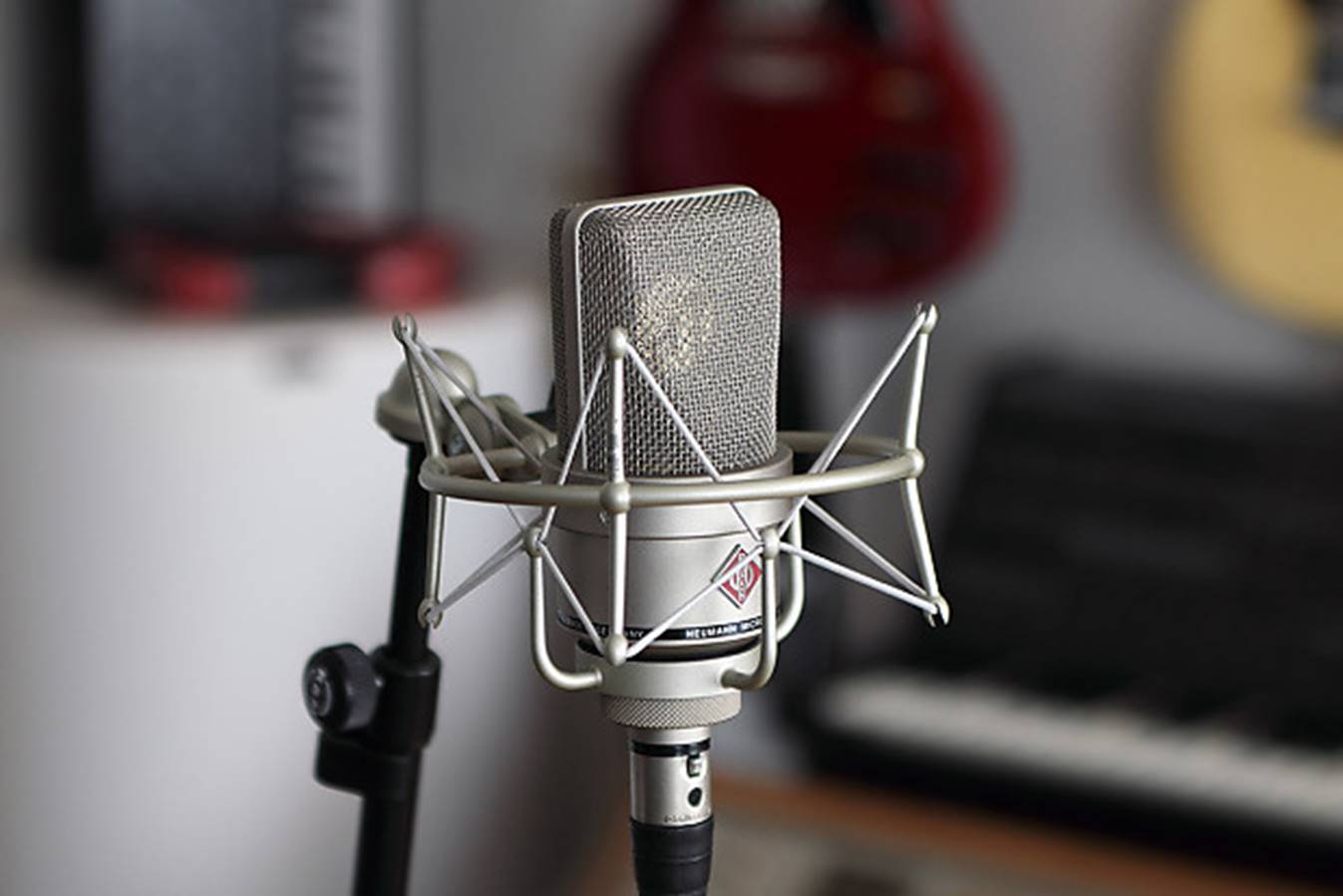
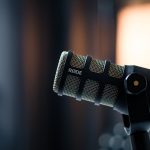
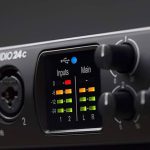
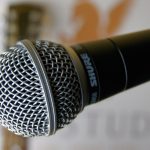
[…] musicians recommend starting out with a large-diaphragm condenser mic when recording vocals and acoustic instruments, due to their ability to capture high-frequency […]
[…] The 10 Best Condenser Mics for Recording Vocals […]
[…] The Best Condenser Mics for Recording Vocals […]